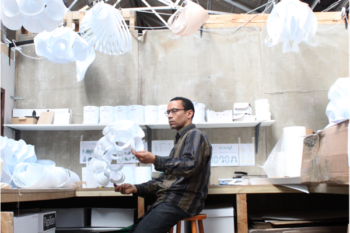Abroad, a lot of people conceptualize America as a “car-culture”. And they are, in large part, correct. It’s estimated that as many as 1 of every 6 jobs in the US is either directly or indirectly related to the auto industry. America’s rise to global economic stardom can be tied to the auto industry as well, along with the fossil fuel, agricultural, and arms industries. It’s hard to say for certain which came first, Americans’ propensity towards ultra-individualism, or the car, but they definitely are a marriage made in heaven.
 Something that doesn’t get a lot of press internationally is the growing number of people in the USA who don’t own cars at all. Especially in larger cities, where public transportation is available, the combination of higher gas prices, parking fees, maintenance fees, inevitable parking tickets, road rage, and environmental impact are making it more and more attractive to explore non-auto options for transportation. As of 2009 35 million people in the USA took public transportation of some kind every weekday, not including people who walk or bicycle. Bicycle commuters in the USA are becoming a larger and larger demographic. In fact, in Portland Oregon, over 5% of commuter trips are taken on a bicycle. In the city of Chicago, where I reside, the number is much lower (1.15%) but that’s a 129% increase between 2000 and 2009, and all indications are that the number keeps going up.
Something that doesn’t get a lot of press internationally is the growing number of people in the USA who don’t own cars at all. Especially in larger cities, where public transportation is available, the combination of higher gas prices, parking fees, maintenance fees, inevitable parking tickets, road rage, and environmental impact are making it more and more attractive to explore non-auto options for transportation. As of 2009 35 million people in the USA took public transportation of some kind every weekday, not including people who walk or bicycle. Bicycle commuters in the USA are becoming a larger and larger demographic. In fact, in Portland Oregon, over 5% of commuter trips are taken on a bicycle. In the city of Chicago, where I reside, the number is much lower (1.15%) but that’s a 129% increase between 2000 and 2009, and all indications are that the number keeps going up.
Photo: My Bike! (A hybrid)
US roads and cities were originally paved and re-designed between 1880 and 1900, to serve the needs of cyclists (the “Good Roads Movement”), not motorists, as most Americans assume. Unfortunately almost all infrastructure is now designed for the sole benefit of motorists; there are quite a few suburbs where they don’t even have sidewalks. It’s just assumed that you’ll drive everywhere.
Even before the relatively recent increase in bicycle commuting, bicycle culture has been a rich part of America’s mix. You have fixed-gear-riding bike messengers, catapulting themselves along city streets; competitive racers, decked out in their Lycra riding expensive racing bikes; low-rider bicycles, often identifiable by their shiny chrome-plated hardware; and just casual riders.
Some “hardcore” cyclists refer to casual riders (or those in street clothes) as “Freds”, though those same riders may refer to the Spandex-clad as “Lances” (as in Lance Armstrong). Bicycle subcultures are fascinating, though of course, it would be nice if everyone shared the same goal of better accessibility and improved bicycle infrastructure.

A bike messenger on a fixed-gear (or “Fixie”)
Currently, due to the relatively low number of riders, in many places laws about how/where to ride are not heavily enforced. In Chicago, you have to stay off the sidewalk if you’re over 12 years old (and you will get a ticket for it in some parts of town), but most other laws aren’t highly enforced by the police. I think the reasoning is that A. The police have real crime to take care of, and B. Idiot cyclists generally only get themselves killed, unlike idiot drivers who can kill others pretty easily (and they do with alarming frequency in the US).
 Many cities, like Chicago, have miles and miles of dedicated bike paths. The “Lakefront Path” in Chicago hugs the shore of Lake Michigan, and stretches from 87th St. on the South side, all the way to Bryn Mawr (5600 North) on the North side; a distance of over 15 miles, all within city limits! There are also bike rental kiosks (“Community Bicycles”), and standard rental shops in a lot of American cities, you might be surprised to know. It’s a fantastic way to travel around and see the sights.
Many cities, like Chicago, have miles and miles of dedicated bike paths. The “Lakefront Path” in Chicago hugs the shore of Lake Michigan, and stretches from 87th St. on the South side, all the way to Bryn Mawr (5600 North) on the North side; a distance of over 15 miles, all within city limits! There are also bike rental kiosks (“Community Bicycles”), and standard rental shops in a lot of American cities, you might be surprised to know. It’s a fantastic way to travel around and see the sights.
Read more:
On yer bikes! Dublin’s new community bike programme
American baseball: Why do they call it a world series?
Should we talk about the weather? Climate diversity in the USA






The Dutch (holand) are crazy about bikes, I have never seen something like that.